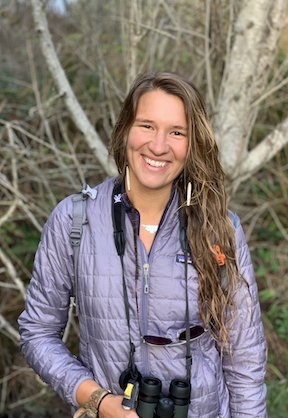Hanover Bald Eagle Blog # 18 - 2021
In partnership with Pennsylvania Game Commission and Comcast Business .

Bald eagles projectile poop. It’s not pretty, it’s not subtle, but this behavior actually keeps the nest sanitary. Well, as sanitary as a nest filled with carcass remains can be.
Birds do not chew food like us; they swallow food whole or use their beaks to rip, crush, or break items into smaller pieces. Some birds such as ravens, crows, and gulls have discovered innovative ways to initiate this process by dropping shellfish on rocks, or in the case of black vultures, dragging coconuts into roads to be flattened by oncoming cars. After a bird swallows, the food moves down the esophagus and into a crop, where it’s stored so that the bird has more time to digest. Once a morsel passes on to the stomach, it goes through the proventriculus which softens the food, the gizzard, which grinds it, and then on to the intestines. Next is the ceca, two pouches that assist the bird in absorbing remaining water and completing the final steps of digestion.
Finally, it’s time for expulsion of the remaining components, bringing us to the apt term well known among birders: whitewash. Bird poop can serve as a helpful clue to the whereabouts of roosts, perches, and other bird hangouts.

Even with these basics, not all bird poop is created equal. Piscivorous (fish-eating) birds like bald eagles produce whiter poop than many other species because fish are easier to digest and absorb than prey items that contain hair or exoskeletons. In other words, when an eagle digests a fish it produces less food waste which is the dark component of bird poop.
Sanitation is not a universal priority among birds. Burrowing owls, for example, repurpose old mammal burrows for their nests, and research shows that owls are more likely to return to a mammal burrow that still contains old material like dung. There may be benefits to living in a dirty home after all.
Remember: When birdwatching, one should keep their mouth closed, no matter how jaw-dropping a bird sighting might be, because at any point, whitewash may fall from the sky.
Fun Fact:
Golden eagle nests in Alaska are sometimes ringed with orange lichen and grass tufts, because eaglet poop creates a fertile environment for things to grow that wouldn’t otherwise exist on those rocky cliffs. Researchers look for these poop gardens when they survey for nests from the air.
Sources
Riding, C.S., & Belthoff, Jr. R. (2015). Removal of old nest material decreases reuse of artificial burrows by burrowing owls. Wildlife Society Bulletin, 39(3), 521-528. http://doi.org/10.1002/wsb.552
Opar, Alisa. (2011, June 29). What do Nesting Birds do with all that poop? Audubon. https://www.audubon.org/news/what-do-nesting-birds-do-all-poop
Mayntz, Melissa. (2018, December 24). How Do Birds Eat? Digestion Facts. The Spruce. https://www.thespruce.com/digestion-facts-for-birds-386437
ATTENTION HANOVER EAGLE VIEWERS - We recognize that over the years this bald eagle pair has been named by the public and is commonly referred to as "Freedom" and "Liberty". While we understand that naming the eagles helps connect and distinguish the female from the male eagle, naming the pair introduces an element of domesticity to wild animals. In order to respect the eagles and focus on their natural history, we will refer to the female and male as such as per recommendations of the Pennsylvania Game Commission.

RAPTOR ECOLOGY SPECIALIST - ZOEY GREENBERG
RETURN TO HANOVER BALD EAGLE BLOGS
WATCH THE HANOVER BALD EAGLE LIVE CAMS
For over 20 years, HDOnTap has provided live streaming solutions to resorts, amusement parks, wildlife refuges and more. In addition to maintaining a network of over 400 live webcams, HDOnTap specializes in design and installation of remote, off-grid and otherwise challenging live streaming solutions. Contact press@hdontap.com for all media needs, including images and recordings.